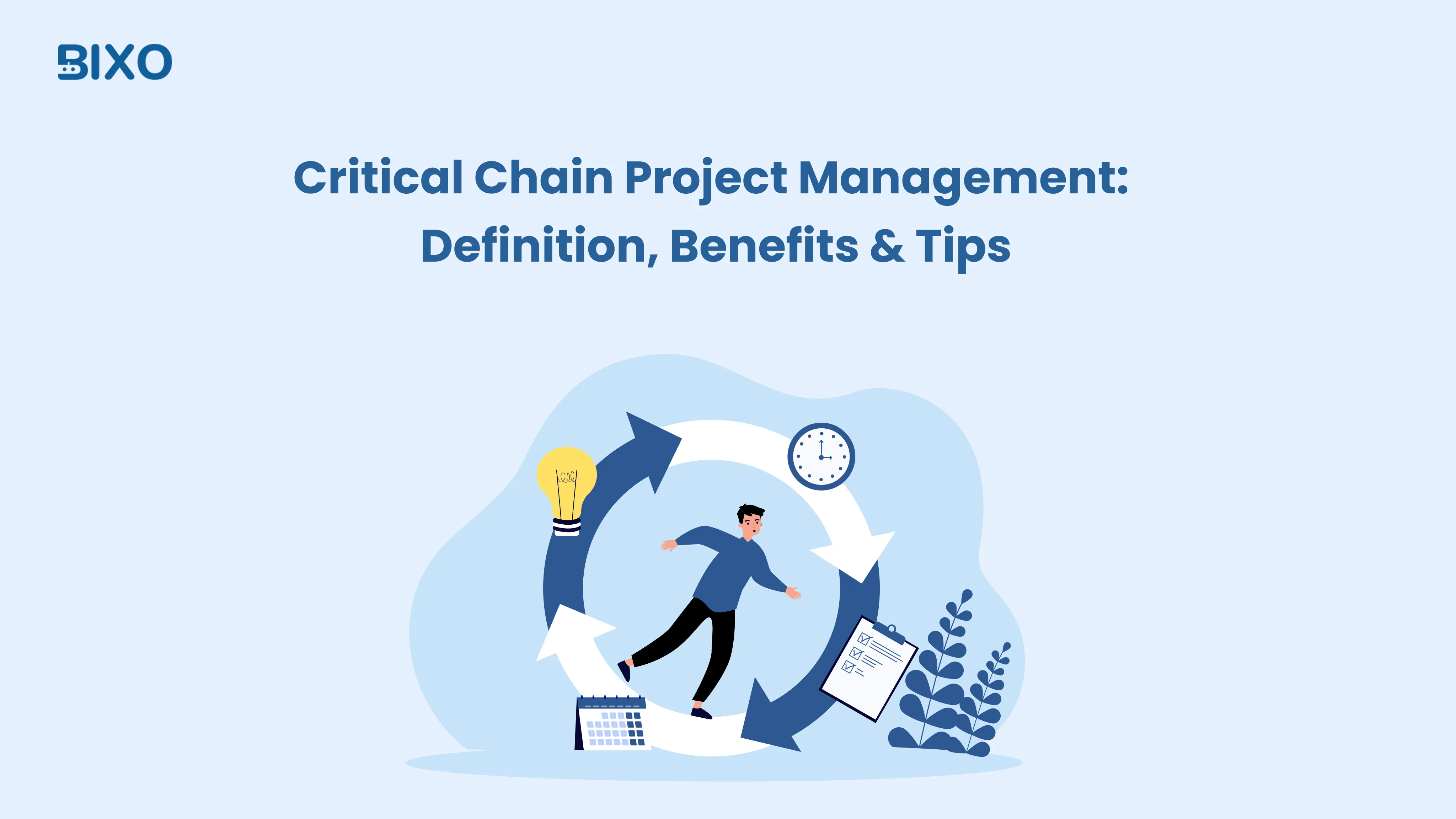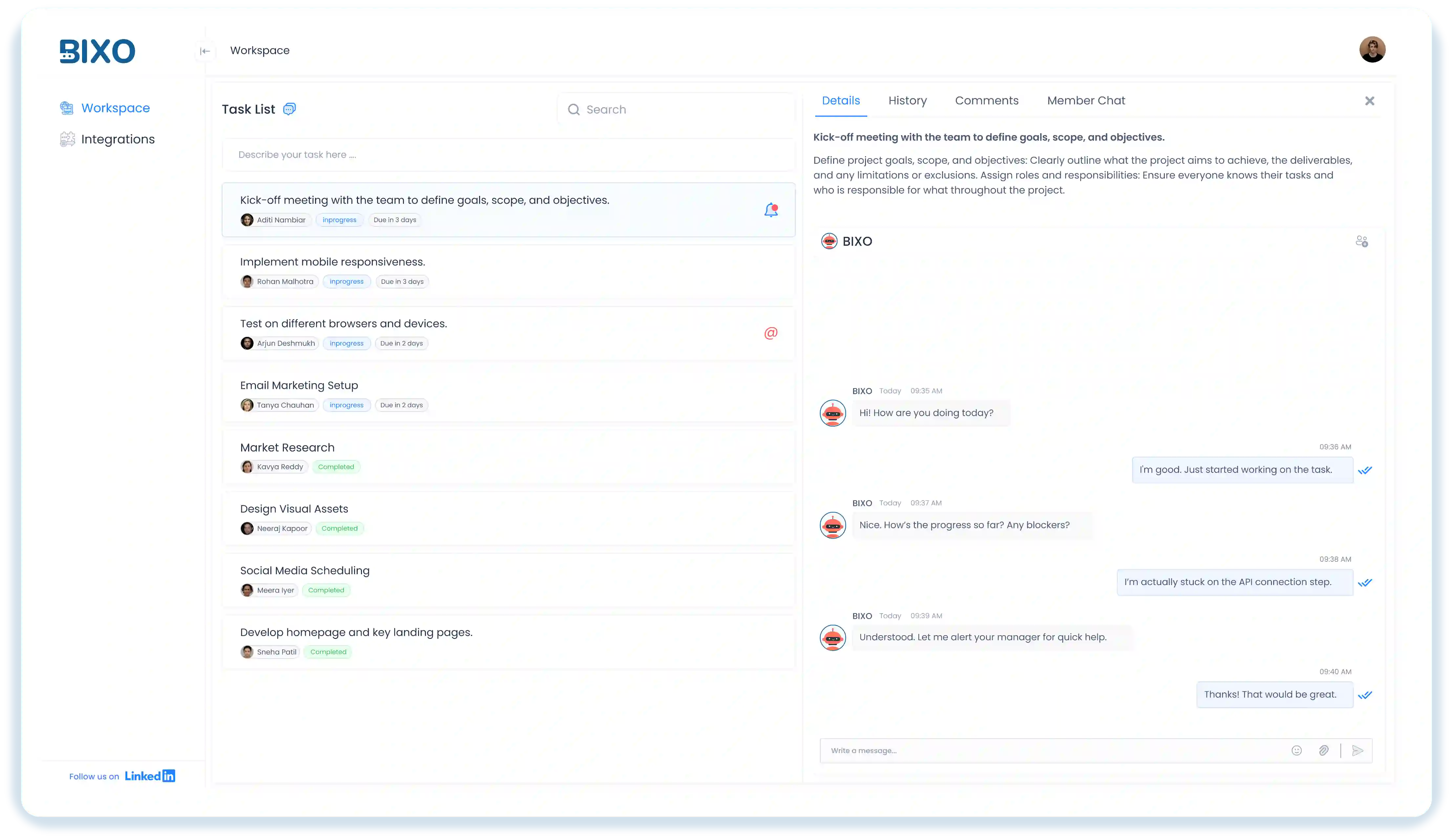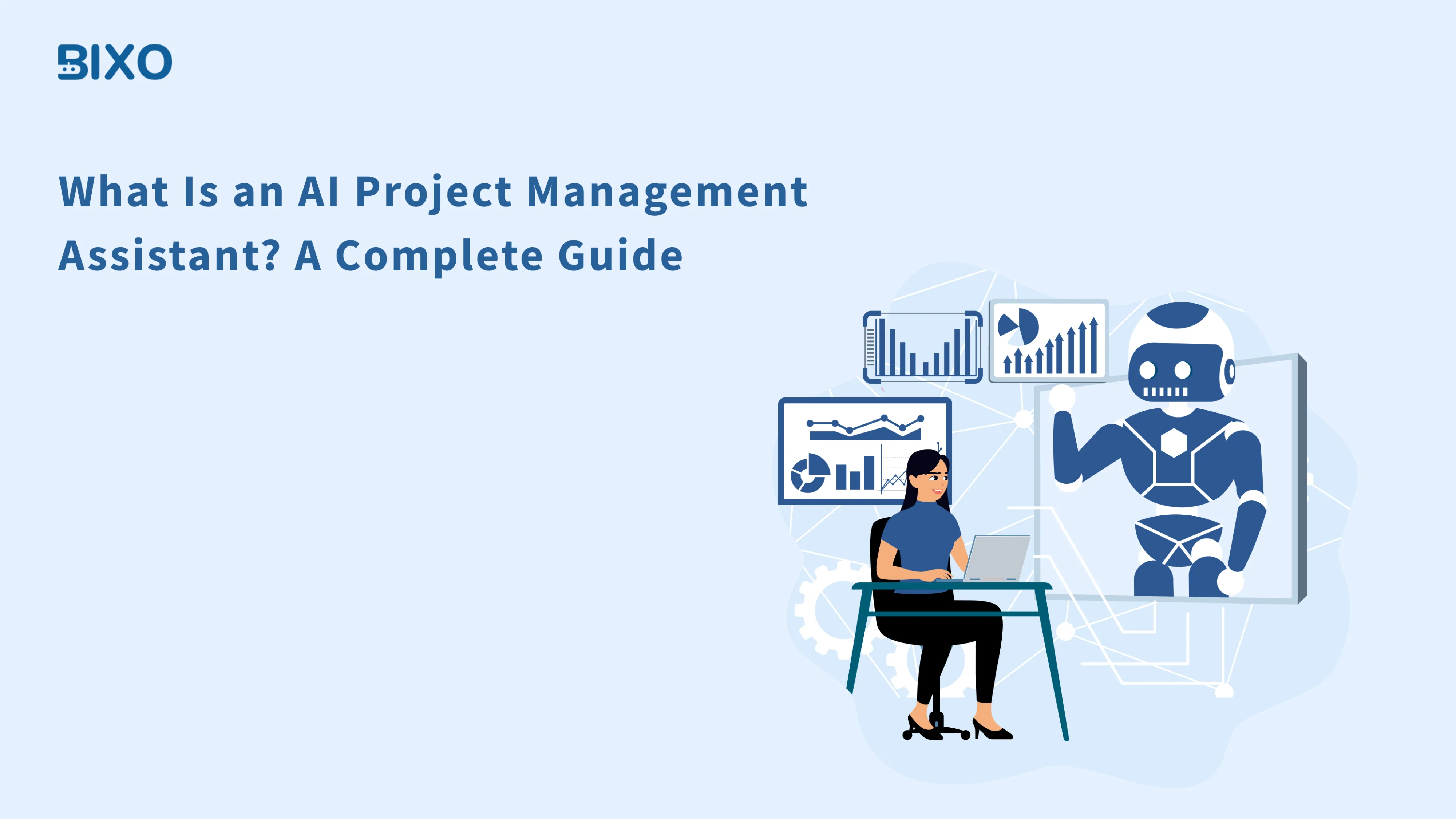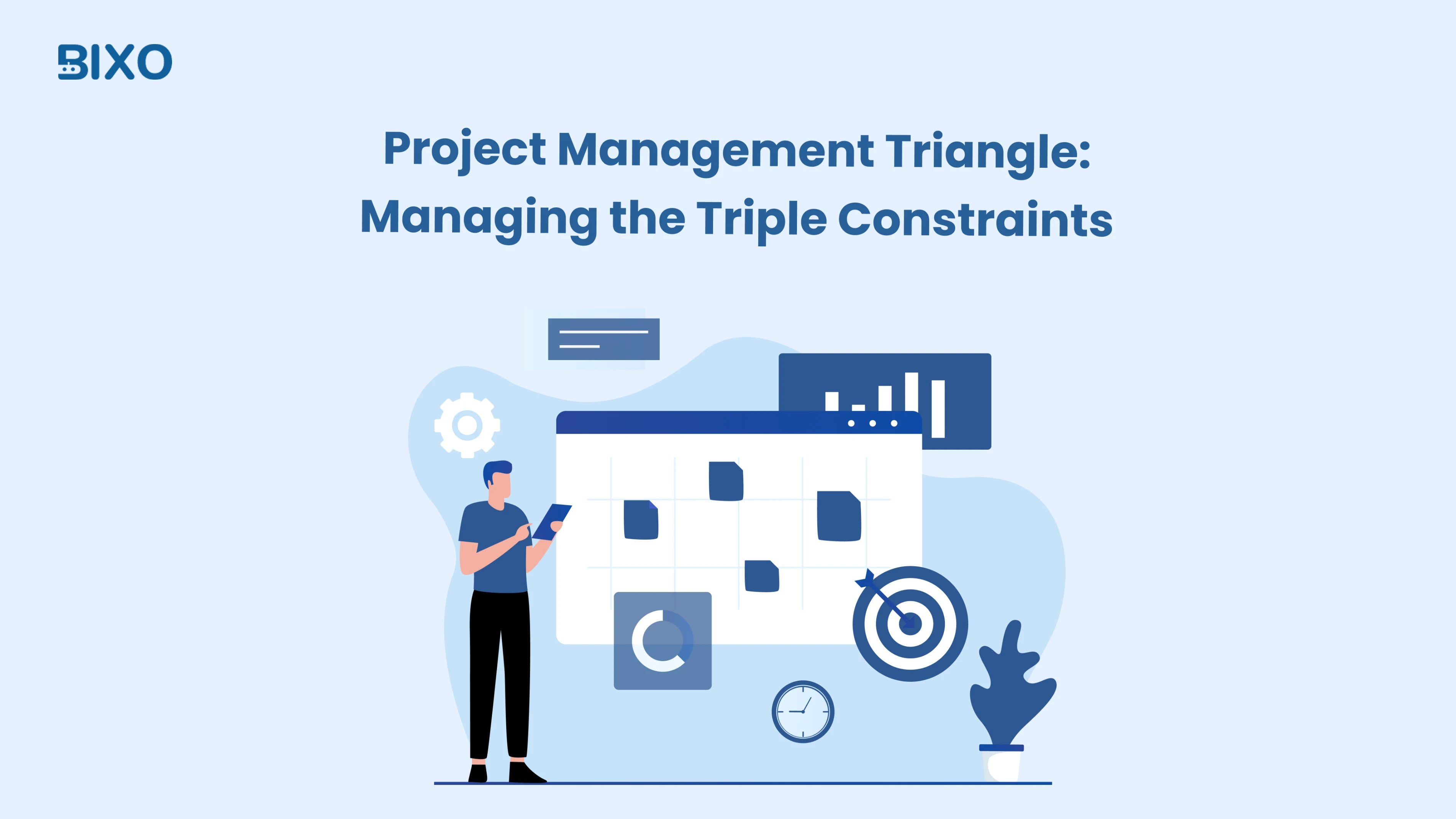
Table of Content
Focus on what matters. BIXO handles the rest!

Ever feel like no matter how well you plan, your projects still face delays or last-minute rushes? That is where critical chain project management helps you. It is a smarter way to plan projects that focus on your team, time, and resources. CCPM is not just about following a long list of tasks. With CCPM, you can finally stop overloading your schedule and start working with more confidence. It helps you use buffers, manage resources better, and finish projects on time without any pressure. In this blog, you can explore how this critical chain methodology works and how you can apply it to your next critical chain project.
What Is Critical Chain Project Management (CCPM)?
Critical chain project management is a project planning approach that focuses on resource availability and task dependencies. It not only focuses on time, but it also considers the resource limits to find the most realistic task path for completing the project faster. CCPM offers time buffers to deal with delays before they affect the whole timeline. This makes it easier to stay on track, even when things do not work as planned.
The purpose of CCPM is it look beyond task deadlines, as it encourages better planning, smarter work scheduling, and realistic timelines. By following this method, you can handle unexpected changes without any work stress. It is a more reliable and flexible way to manage your projects from start to finish.
Which Components Are Essential to Critical Chain Methodology?
When you are using the critical chain methodology, your project's success depends on a few key components that help you handle delays and stay on track. To ensure the effectiveness of your critical chain method, it is essential to understand the role each buffer plays.
Project Buffer
A project buffer is added at the end of your critical chain for time management. It gives you extra time to detect delays without missing your final deadline. This buffer prevents last-minute risks in project. You do not have to guess how long a task might take to complete. Instead of this, a project buffer helps you to deal with unexpected problems with confidence and still meet goals in the critical chain methodology.
Feeding Buffer
A feeding buffer protects the critical chain from delays in tasks that are not mainly important. When these smaller tasks take longer than planned, the buffer stops the tasks from slowing down the whole project. It works like a safety barrier between less important tasks and the most important ones. This buffer is helpful when you are handling many tasks at the same time. This buffer makes sure that there are no delays in the task, which makes the whole project slower.
Resource Buffer
A resource buffer helps to make sure that the right people, tools, and resources are ready at the right time. It works like a reminder, so no one has to do the extra work at the same time or get confused by unexpected tasks. This buffer really helps you when your team has limited time or tools. If you often face delays due to waiting for someone to complete a particular task or something, this resource buffer can fix that delay. It supports smoother workflows in the critical chain methodology by reducing sudden delays.
What Are the Steps in Critical Chain Management Processes?
The process of critical chain management follows four key steps that help you to plan smarter and avoid delays. Each step keeps your team and resources in sync while protecting your timeline from unexpected tasks.
Here are the four key steps in the CCPM process:

Identify the Critical Chain
Identify the longest chain of tasks that depend on each other. The longest chain is known as the critical chain, and it is based on both task order and resource availability. This critical chain shows which tasks most affect your project's finishing early without any delays. Focusing on this critical chain helps you to avoid delays that slow everything in your project.
Schedule and Buffer Management
After identifying the critical chain, it is time to add barriers known as buffers to protect the chain. Buffers give you extra time for handling task prioritisation. In the critical chain methodology, this step helps you to create a project plan that is more flexible and less stressful for managing a project.
Resource Allocation and Management
As a next step, you must check that team members and tools are available when there is a need in a project schedule. Critical chain project management avoids giving too many tasks to the people at the same time. Instead of overloading employees with work, CCPM helps you to assign one task at a time. This keeps your team focused, lowers stress, and allows tasks to move forward more smoothly.
Buffer Monitoring and Control
Once the project starts, you have to check daily on how much buffer time is being used for a task. If it starts running out quickly, you have to know that there is a problem in your planning of a project. In critical chain management, watching your buffer time helps you to fix small delays early so they do not turn into bigger issues in the future.
What Are the Benefits of Using Critical Chain Methods?
The critical chain method helps you to manage projects in a faster and more efficient way. It focuses on time, team capacity, and real team management challenges so that you can track deadlines with less stress.
Here are the benefits of using CCPM in your projects:

Accelerated Project Delivery
The critical chain method helps you finish your project quickly. You have to focus only on important tasks and avoid wasting time on unnecessary ones. This keeps everything moving quickly and smoothly.You do not have to wait for the tasks to complete or keep jumping between different tasks. By using CCPM, you can finish one task properly, then start the next task. This helps you finish the task faster and feel less stressed.
Smarter Use of Resources
With critical chain project management, each person gets the right amount of time to finish their task without being overloaded. CCPM ensures that team members know exactly what to do and when to complete a task by removing confusion and keeping work on track. Using CCPM tools and time wisely without any waste leads to better planning and smoother coordination between the team. You finish most of the work without stressing the team.
Lower Project Risks
Using buffers in critical chain management helps you to deal with delays. If something goes wrong, there will be extra time assigned to solve that unexpected issue. This keeps the whole project safe. It is easier to fix small problems before they become big issues. By fixing the issues earlier, you have less chance of missing the deadlines. This makes your project more reliable.
Boosted Team Focus and Morale
The critical chain method keeps your team focused on one task at a time. This avoids confusion and unexpected tasks. Your team members feel clear about their tasks and time. When the team is not under pressure, they can do better work. They also feel less stressed and more supported. This builds trust and stronger team management.
What Tips Ensure Success with CCPM?
Critical chain project management works best when you follow a few smart tips. These tips help you to plan better, avoid delays, and finish work on time.
Here are some smart tips for effective critical chain project initiation:
Manage Constraints
Every project has some limits, such as deadlines, the number of team members available, or access to specific tools and equipment. Identifying these constraints early helps you avoid last-minute risks and creates a realistic plan. When you understand the limits of your project, you make smarter choices with a smoother workflow. It keeps your team focused, and your project will be completed before the deadline. By managing the constraints, it avoids stress for your team.
Focus on Critical Tasks
Do not try to do everything at once. First, focus only on the work that truly matters for your project. These critical activities are the ones that move your project forward. Skipping non-essential work saves time and resources. By identifying priorities early, your team will stay on track and finish the project faster without delays.
Use Buffer Management
Add buffer time to protect your project plan from delays. Buffers act like a safety barrier if something goes wrong with unexpected tasks. It gives you more control to solve the issues and make a smoother project. Track how the buffer time is being used during the project; if it runs out quickly, there might be a problem. Spotting this early in the project helps you take action fast.
Optimise Resources
In critical chain project management, use your team’s time and resources wisely. Avoid overloading the tasks, and let them finish one task before starting another. Make sure the right tools and equipment are ready when needed to keep work smooth and efficient. This optimisation helps the team to work better and make fewer mistakes. By optimising resources, your team can stay calm and focused without any stress. In this way, everyone does their best work without any pressure.
Use Buffer Management
Add buffer time to protect your project plan from delays. Buffers act like a safety barrier if something goes wrong with unexpected tasks. It gives you more control to solve the issues and make a smoother project. Track how the buffer time is being used during the project; if it runs out quickly, there might be a problem. Spotting this early in the project helps you take action fast.
Manage Risks Proactively
Try to identify problems before they turn into major issues. Write down all possible risks in process and try to find solutions to handle them. This helps you plan early and save time later. If you solve issues early, they do not turn into big troubles. By managing risks, you can feel more prepared and calmer. In this way, the project moves forward safely.
Promote Collaboration
Encourage your team to communicate and share updates. Good teamwork helps people to work faster and better. It keeps confusion away. When your team supports each other, work feels easier and more motivating; this builds trust and clarity between the members.
Drive Continuous Improvement
After the project ends, take some time to think about what worked well and what did not work. This helps you learn important lessons for your next project. These small lessons help you plan better in the future and avoid making the same mistakes again; they also ensure that your team has continuous improvement to deliver faster and smarter work.
Ensure Leadership Support
Make sure your management supports the critical chain method. Their involvement keeps the team focused and confident and helps resolve issues quickly before deadlines. When leaders stay involved, the team feels more confident and motivated. It builds a strong working environment and keeps the project moving forward without any trouble.
How Does the Critical Chain vs. Critical Path Impact Project Management?
When you are planning a project, you may hear about the words critical chain and critical path. They may sound similar, but each method has its own differences. These methods change according to how you manage your work and resources.
Critical Chain
The critical chain focuses on resource availability and task dependencies. It adds time buffers to detect delays and manages team workload or tools. This method helps you manage risks better and reduce project stress. It is a flexible and practical choice when dealing with limited resources.
Critical path
The critical path method is more time-based. It focuses on the key tasks that directly affect the project deadline. This approach does not consider resource limits and does not use any buffers. Even though it is useful for time tracking, it may not be suitable when you have changing task priorities or your team’s availability is limited.
How Does BIXO Support Critical Chain Project Management?

BIXO your AI-manager assistant makes it easier to follow the Critical Chain Project Management (CCPM) method. It helps you set task priorities, spot constraints early, and build smarter project timelines. You can assign tasks to people based on what they really do. This helps your team stay focused and less stressed. BIXO also tracks the buffer time and alerts you if something is not working as planned. You can fix small issues before they become big problems. It helps your team to know what is happening and what to do next. BIXO makes your project easier to handle.
Conclusion
Critical chain project management helps teams to finish projects faster with less stress by focusing on key tasks, managing buffers, and using resources wisely. Tools like BIXO make it even easier by showing the right priorities, reducing delays, and helping your team stay on track from start to finish.
FAQs
Buffers are extra time added to your project schedule. There are different types of buffers, such as project buffers, feeding buffers, and resource buffers. These buffers help to detect delays early and keep your work on track.
Using CCPM helps to speed up your project delivery, reduce risks, and make better use of your resources. It keeps your teams focused and motivated by avoiding multitasking.
Yes, project management tools like BIXO support CCPM by helping you to monitor tasks, manage time, and improve collaboration all in one place.
Yes! Even small teams can use CCPM. It helps the teams to stay focused, avoid overload, and complete work on time without any stress.
Get a demo of BIXO
Recommended Blogs

What Is an AI Project Management Assistant? A Complete Guide
Learn how an AI Project Management Assistant helps you organise tasks, automate updates, save time, and improve project results with less effort.
 vishnu-priya |
vishnu-priya |
 Oct 24, 2025
Oct 24, 2025


